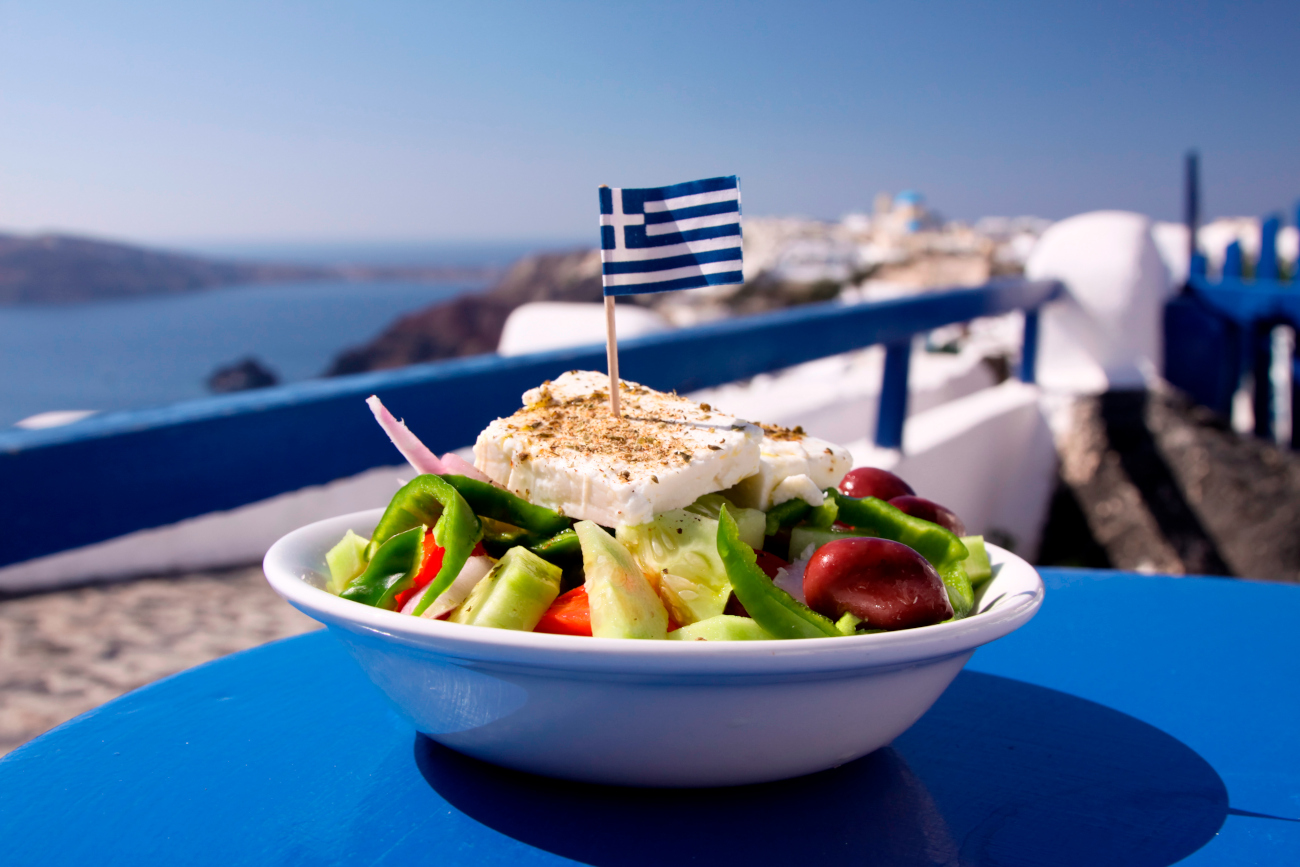Bright bites of cucumbers, chunks of tomatoes, briny olives, thinly sliced onions, and salty zippy feta are quintessential components of Greek salad. It screams freshness and a cheery serving of summer on a plate, it’s become a commonplace side in mainstream meals. And while many think that slapping a bunch of feta cheese onto a mound of vegetables transforms a salad into a Greek salad, well, they’re sorely mistaken. Unlike German chocolate cake, Salisbury steak or chicken teriyaki, Greek salad is actually from Greece and its history is far from what you’d expect.

Greece, with its culture and history, is ancient making this nation inspiration for many surrounding areas. Yet Greek salad is not as old as the Parthenon or Delphi, it only has a history stretching back only several decades.

At the turn of the 20th century, the Greek salad’s story begins. Although Greece and Turkey have always been battling it out in some way or another, this particular war in 1897 was a turning point. In 1893 Greece faced bankruptcy, and another war five years later was just the last straw. Being in a precarious position wasn’t just a political ordeal, it hit all people within Grecian society. Excessive foods and niceties like meats were pinched by all walks of life.

Enter the Greek salad. Cucumbers, olives, and onions had always been a staple within Greece. Tomatoes imported from the new world via Italian explorers took well to the Grecian climate and soil. At the turn of the century, these items were fair game crops for all. A combination of these vegetables was an easy way to fill up without meat.
In the countryside and farming regions, people would bring these vegetables whole and eat them with olive oil on the spot. In the more metropolitan areas like Athens, people got a little fancy and cut up the ingredients, so it was all eaten with a fork on a plate.

So where’s the cheese? It’s a bit of a guess and a bit of folklore, but rumor has it that the Greek salad we know today was formed in the 1960s. Plaka — an old historic area near the Acropolis in Athens — is its birthplace. Here restaurateurs sold this salad (initially without cheese) to tourists, and it was a hit. Yet restaurateurs weren’t making a profit, back then, Greece had tariff restrictions on certain foods.
Basic ingredients (which compromised a Greek salad) could not be inflated and set at a ridiculously high price. Essentially the government was fixing the cost of a traditional Greek salad. To bypass the government restrictions, restaurateurs added feta cheese to the salad. Feta cheese was not restricted by government tariffs. So if restaurateurs added this affordable cheese (but not a traditional ingredient) to Greek salad, then the tariff rules wouldn’t apply. This meant that the price of the salad could be dictated by the restaurants and not the government.

This salad migrated over to the US and its components — while not eaten as commonly every day like in Greece — became the perfect salad to showcase the seasonal bounty of summer vegetables in the US.













